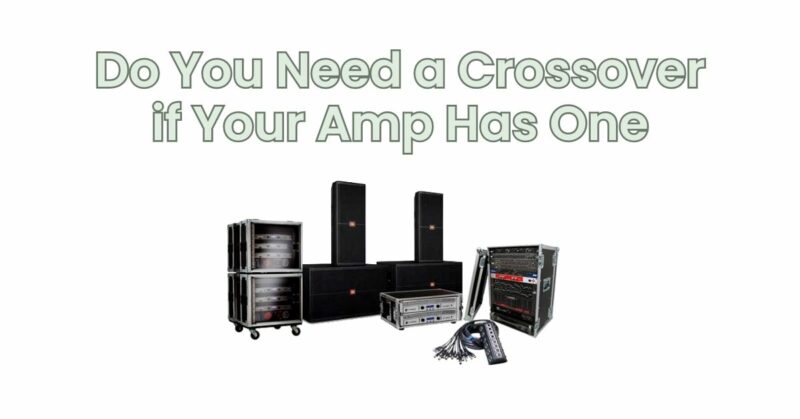Crossovers play a vital role in audio systems by directing specific frequency ranges to the appropriate speaker drivers for optimal sound reproduction. If your amplifier comes equipped with a built-in crossover, you may wonder whether an additional external crossover is necessary. In this article, we will explore the concept of built-in crossovers in amplifiers and discuss whether you still need an external crossover when your amp already has one.
- Understanding Built-in Crossovers in Amplifiers: Amplifiers with built-in crossovers have integrated circuitry that separates the audio signal into different frequency bands and directs them to specific speaker drivers. These built-in crossovers are designed to handle the frequency distribution within the amplifier itself, eliminating the need for an external crossover in some cases.
- Consider Your Speaker Configuration: The need for an external crossover depends on your specific speaker configuration. If you have a speaker system with separate drivers, such as woofers, midrange drivers, and tweeters, and your amplifier’s built-in crossover can adequately handle the frequency distribution to each driver, then an additional external crossover may not be necessary.
- Evaluate the Capabilities of the Built-in Crossover: When assessing the need for an external crossover, consider the capabilities and flexibility of the built-in crossover in your amplifier. Some amplifiers with built-in crossovers offer limited adjustability, providing basic high-pass and low-pass filters. If your audio system requires more precise control over the frequency response, slopes, or crossover points, an external crossover may be beneficial.
- Specialized Audio Systems: In certain audio setups, such as high-end home theater systems or complex car audio installations, dedicated external crossovers or digital signal processors (DSPs) are often used to achieve advanced frequency management and customization. These external devices offer greater control over the crossover points, slopes, time alignment, and equalization, allowing for fine-tuning of the sound reproduction.
- System Expandability and Upgradability: Another factor to consider is the future expandability and upgradability of your audio system. If you anticipate adding more speakers or upgrading your speaker configuration in the future, an external crossover can provide greater flexibility and compatibility with different speaker setups.
- Audio Quality and Precision: In some cases, audiophiles and enthusiasts prefer using high-quality external crossovers to achieve the utmost precision and sound quality. External crossovers may offer improved component quality, better signal isolation, and more advanced filtering options, resulting in enhanced audio performance.
While amplifiers with built-in crossovers can handle the frequency distribution within the amplifier itself, the need for an external crossover depends on various factors. Consider your speaker configuration, the capabilities of the built-in crossover, the complexity of your audio system, expandability, and desired audio precision. In many cases, a built-in crossover may suffice, especially for simpler setups. However, specialized audio systems or those demanding advanced control over frequency management may benefit from the additional flexibility and customization options provided by an external crossover or DSP. Assess your specific requirements and consult with audio professionals if needed to determine whether an external crossover is necessary to achieve the desired sound quality and performance in your audio system.


